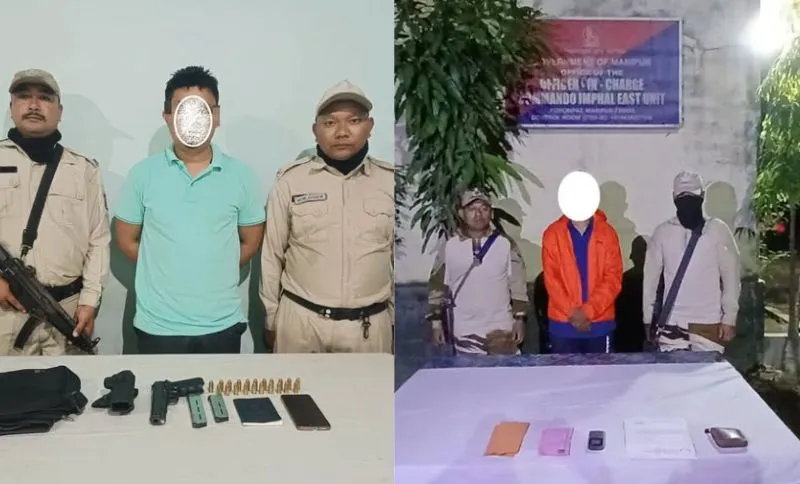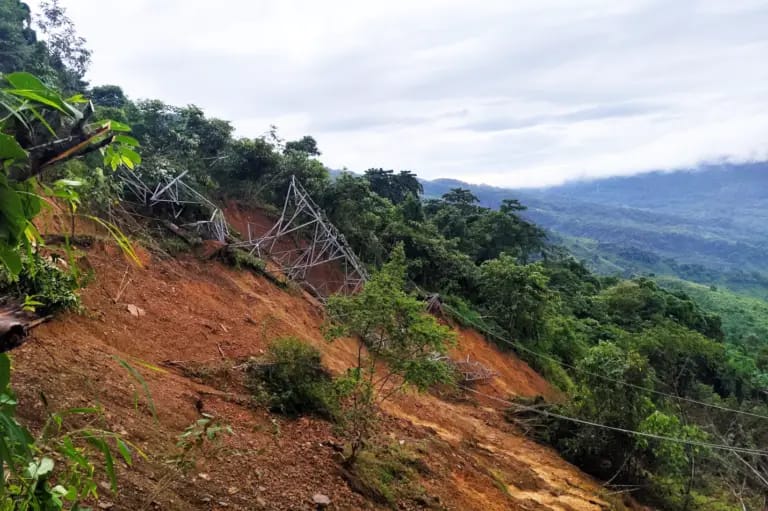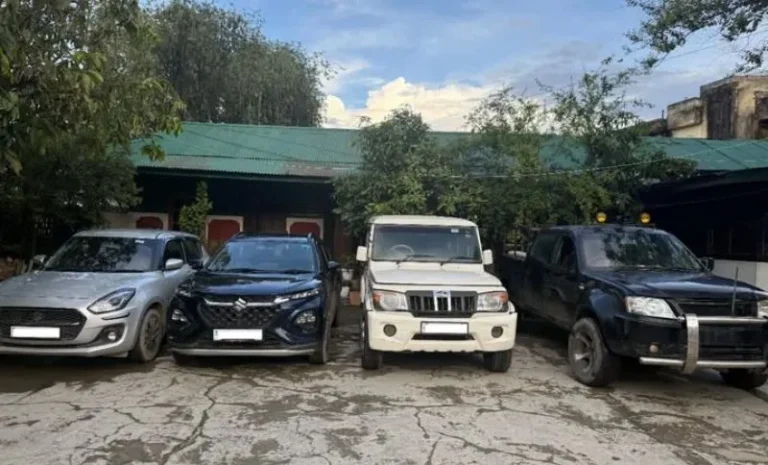MANIPUR: TWO INSURGENTS ARRESTED — ARMS, AMMUNITION AND DOCUMENTS SEIZED
Short summary
Security forces — a joint team of the Assam Rifles and Manipur Police — arrested two active insurgent cadres during intelligence-led operations in the Imphal Valley and surrounding districts, recovering a 9 mm pistol, grenades, ammunition, a vehicle and a range of documents and war-like stores. The arrests were made after specific inputs about extortion and illegal activities near timber transit routes and populated areas; the suspects and seized materials were handed over to police for further investigation.
What happened — the operation on the ground
Picture this: a quiet stretch of road used by timber trucks between hills and valley — a place where drivers usually hurry past, eyes on the path and load secured. Now imagine security forces, acting on a tip-off, quietly move into position and intercept a vehicle that had become the conduit for fear and illegal money collection. That’s the short version of how two insurgent cadres were picked up in Manipur during separate but coordinated intelligence-driven actions. One arrest took place in the Wangkhem–Yaripok area of Thoubal district, the other near Komlaching in Senapati district, where extortion of timber transporters had been reported. The joint teams — Assam Rifles working closely with Manipur Police — recovered a 9 mm pistol, ammunition, a grenade, a Bolero vehicle and several documents from the suspects, and promptly handed them over to police custody.
This wasn’t a random roadblock. It was targeted, surgical, and based on actionable intelligence — in short, the kind of operation that reminds you policing is often more detective work than drama.
Who conducted the arrests and why that matters
The Assam Rifles, India’s oldest paramilitary force with a long history in the Northeast, and the Manipur Police have been operating together for months in coordinated counter-insurgency and crime disruption drives. These joint teams combine the Assam Rifles’ operational reach in difficult terrain with the police’s legal mandate for investigation and prosecution. That combination is important: it ensures that when suspects are picked up, there’s both tactical capability on the ground and a legal-administrative channel to carry the case forward.
Why emphasize the partnership? Because in a place like Manipur, where geography, local networks, and multiple militant outfits complicate security efforts, cooperation is not optional — it’s essential.
The haul: what was seized and what it signals
The recovered items — a 9 mm pistol, ammunition, a grenade, a Bolero (vehicle), and incriminating documents — might sound like a mixed bag. But each item tells a story:
- The pistol and ammunition show access to lethal small arms, which are commonly used in targeted attacks and intimidation.
- A grenade indicates access to explosive devices that can cause mass harm and sow terror; even a single hand grenade is a serious threat.
- The Bolero points to operational mobility — insurgents use vehicles for movement, extortion runs, and moving caches.
- Documents are often the most revealing: ledgers, contact lists, orders, or instructive notes can map out extortion networks, chains of command, and logistical links.
Together, they sketch a small but actionable ecosystem — the tools of local insurgent economics (extortion), intimidation (guns, grenades), and logistics (vehicle, papers). Seizures like these don’t just remove weapons from circulation; they disrupt daily revenue streams that sustain local cadres.
How these arrests fit into a broader crackdown
This incident is not isolated. Over recent months, security forces — Army, Assam Rifles, Manipur Police, and other central forces — have ramped up coordinated raids, checkpoints, and targeted arrests across multiple districts of Manipur, recovering dozens of weapons, IED components, and detaining multiple cadres. These aggregated efforts suggest a sustained counter-insurgency rhythm rather than sporadic action: intelligence collection, follow-up raids, and a systematic hunt for caches and networks.
That scale-up responds to a dual need: immediate neutralization of active threat elements and the longer-term goal of reclaiming territory from criminalized insurgent lanes.
Final thoughts — why this matters to everyone in Manipur
At the end of the day, arrests like these are small but necessary acts in a longer project: reclaiming normal life from cycles of militancy and crime. They buy the breathing room civil society needs to rebuild trust, for local businesses to operate without fear, and for governance to reassert itself. In fragile contexts, every recovered weapon, every seized ledger, every arrested extortionist is a small victory for the rule of law.
If you look at the map of Manipur’s recent security operations — the pins and dates and the lists of seized items — a pattern emerges: persistence, local intelligence, and coordinated action yield results. That’s not a silver bullet. But it’s a start.
FAQs
Q1: Were the arrested individuals linked to any specific banned group?
A1: The arrests involved active cadres from valley-based underground groups; previous operations in the region have involved outfits such as KYKL and KCP. Investigative work — including forensic checks of documents and phone records — will clarify precise affiliations.
Q2: What exactly was recovered from the suspects?
A2: Reports specify a 9 mm pistol, ammunition, one grenade, a Bolero vehicle and several documents, which were seized and handed over to the police for further probe. Documents are likely being examined for links to extortion networks or other operatives.
Q3: How do these arrests affect timber transporters in the area?
A3: If the arrests successfully disrupt extortion networks that targeted timber trucks, transporters could experience fewer illegal levies and safer passage. Ongoing monitoring and additional enforcement actions in transit corridors will determine long-term impact
Q4: Which security forces were involved and why is that important?
A4: The Assam Rifles and Manipur Police led the joint operations. This partnership is important because it combines paramilitary operational strength with the police’s legal authority, enabling both immediate arrests and prosecutable evidence collection.
Q5: What should local residents expect in the coming weeks?
A5: Residents may see increased patrols, checkpoints, and follow-up raids as authorities exploit leads from the seized documents. Ideally, they should also expect clearer avenues for reporting extortion and improved security on known trafficking routes. Civil-military coordination aims to stabilize affected localities while legal processes proceed.




